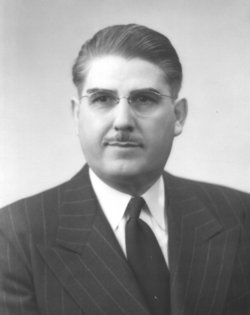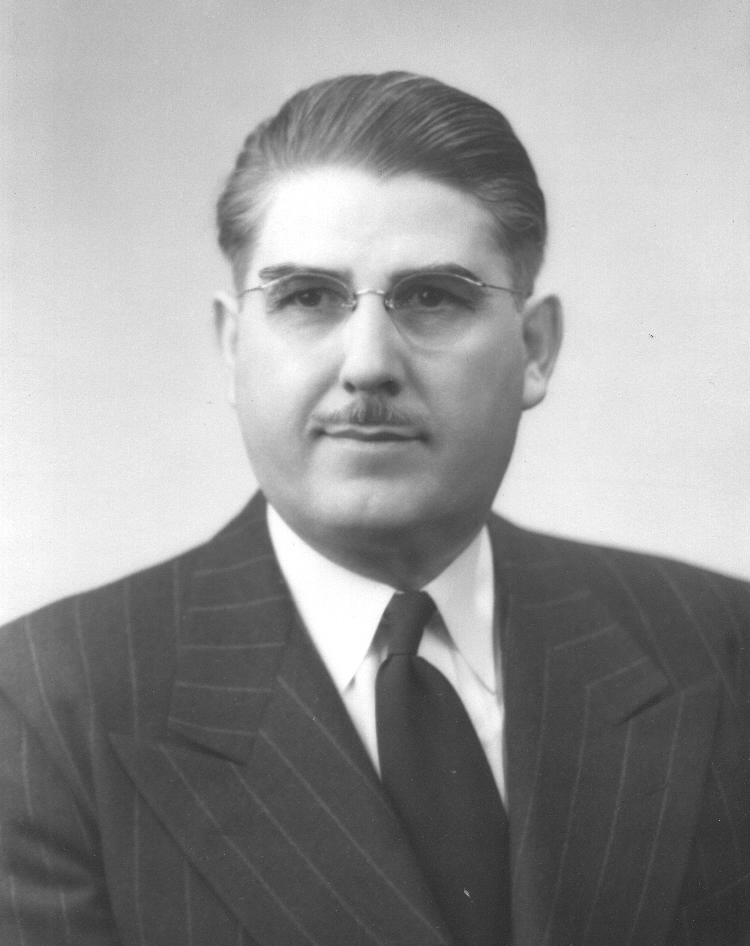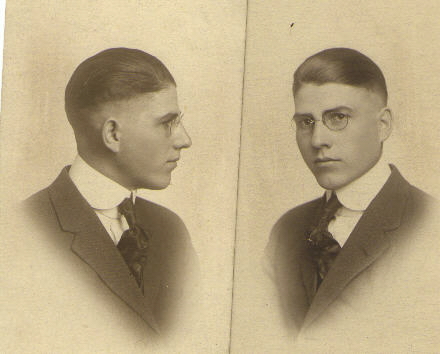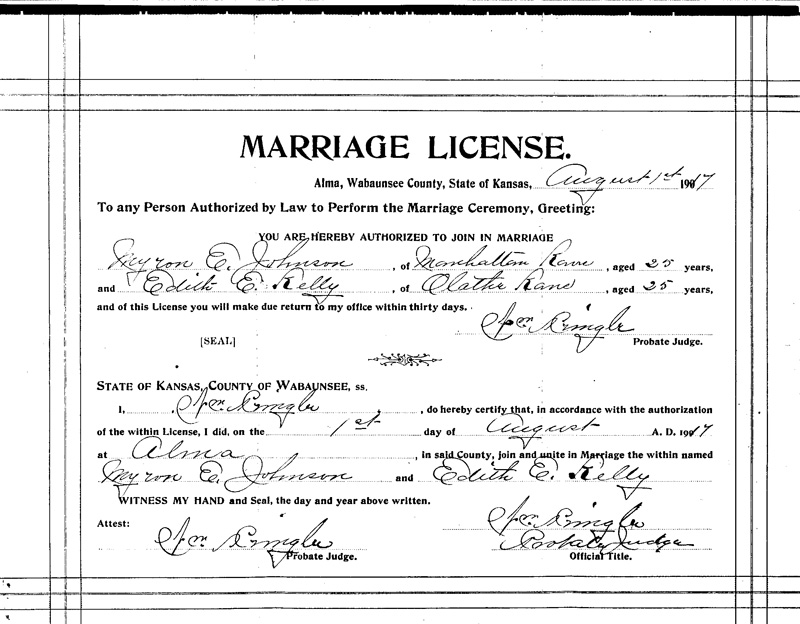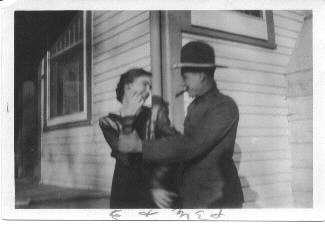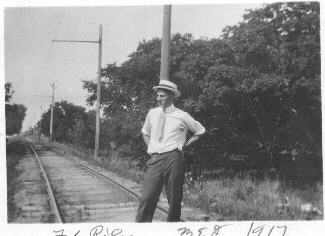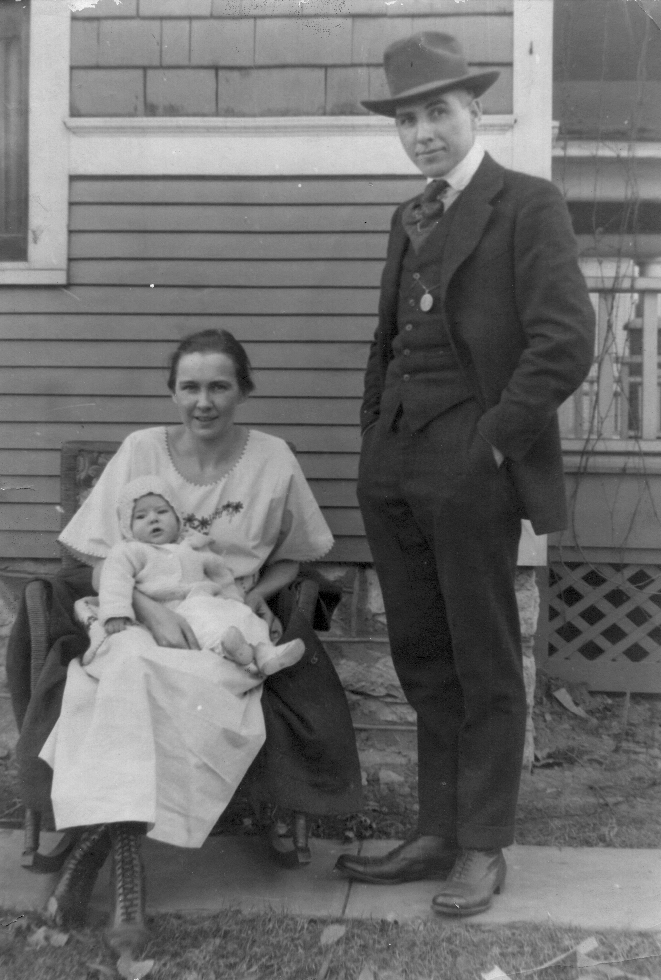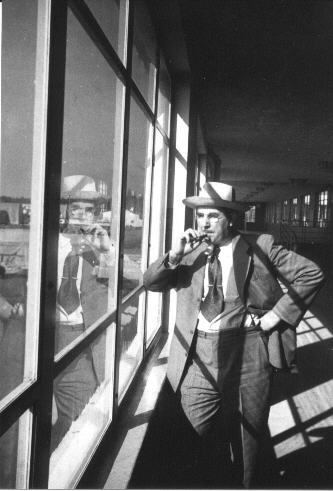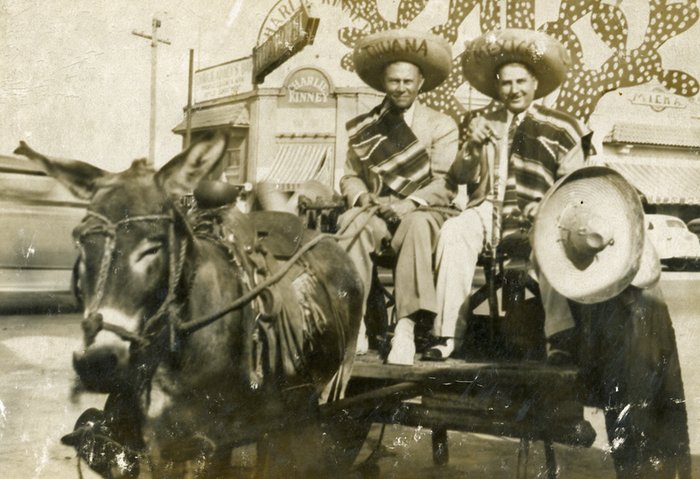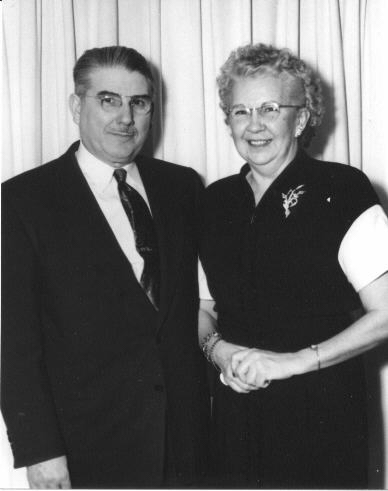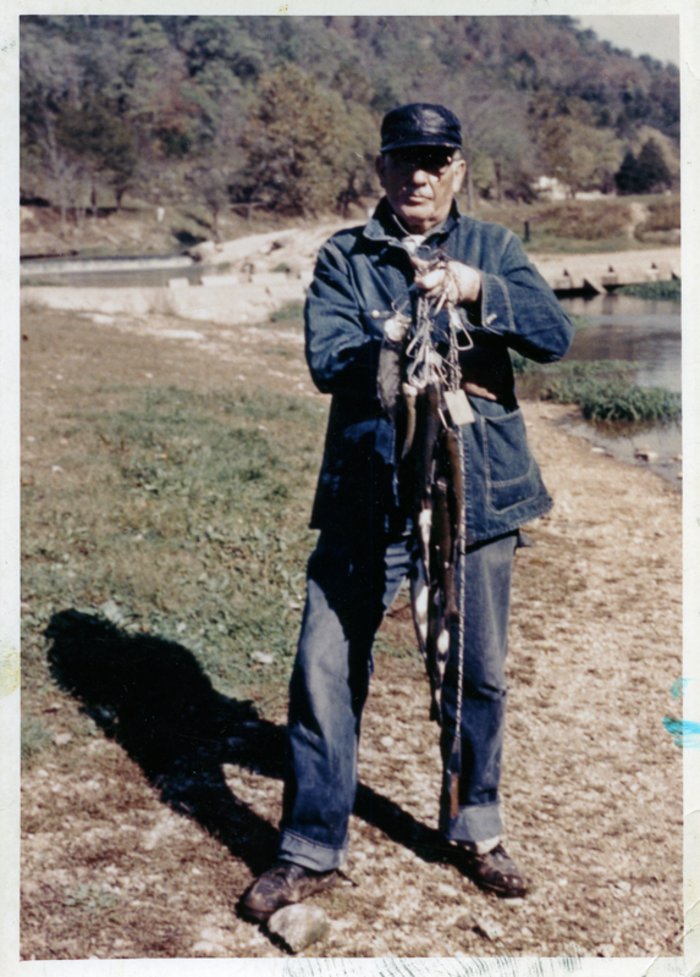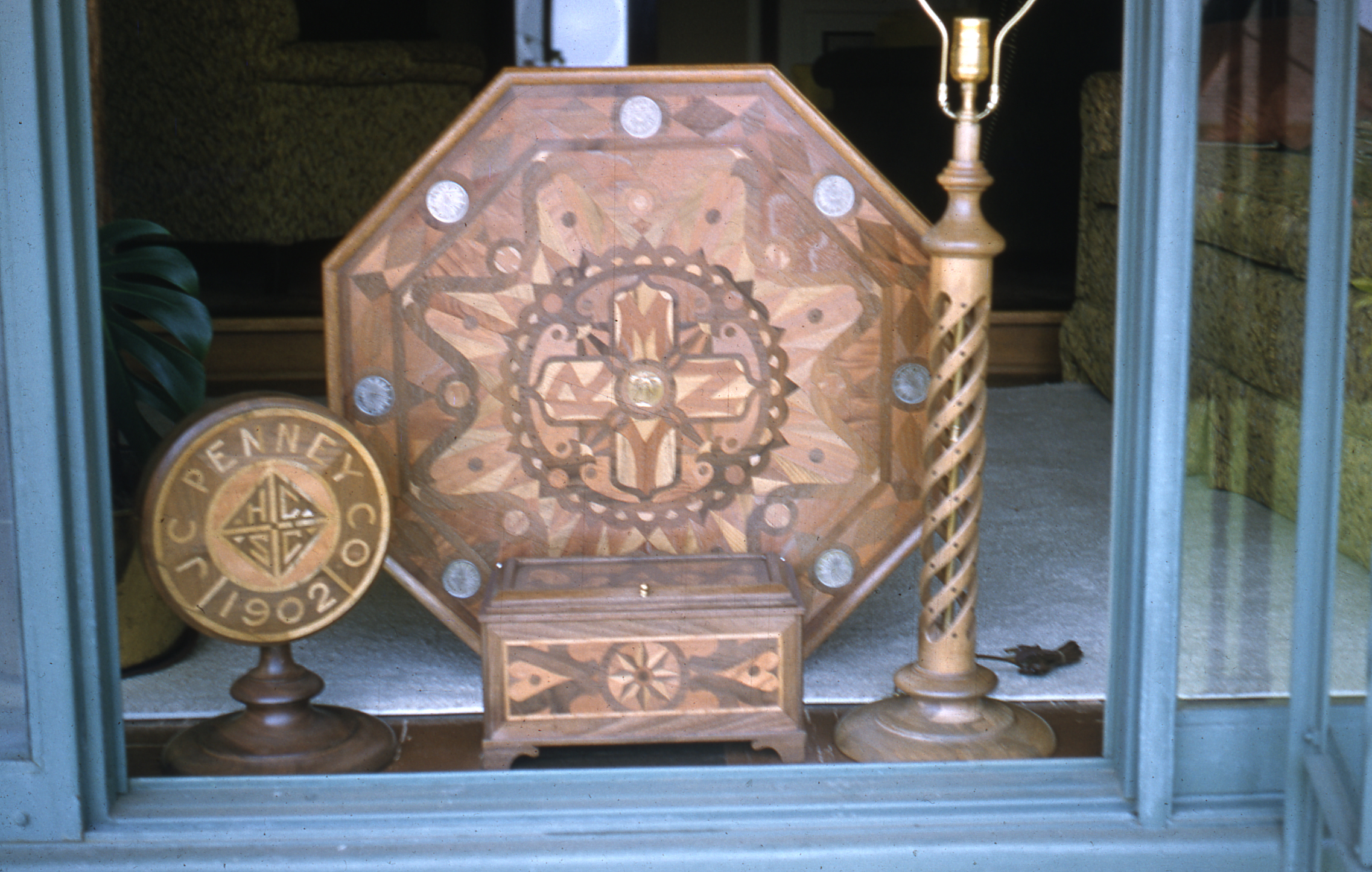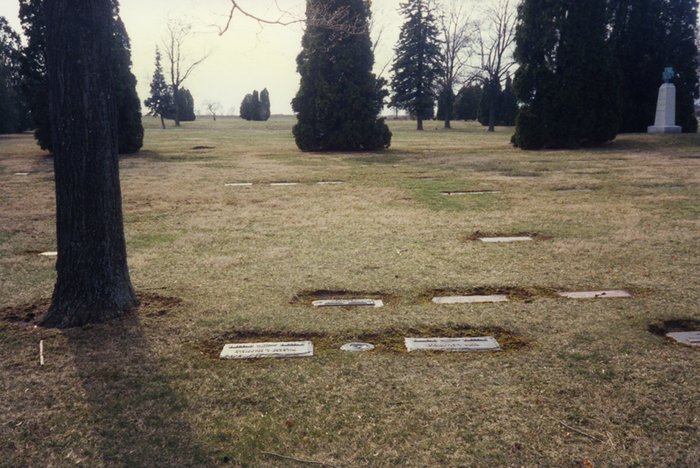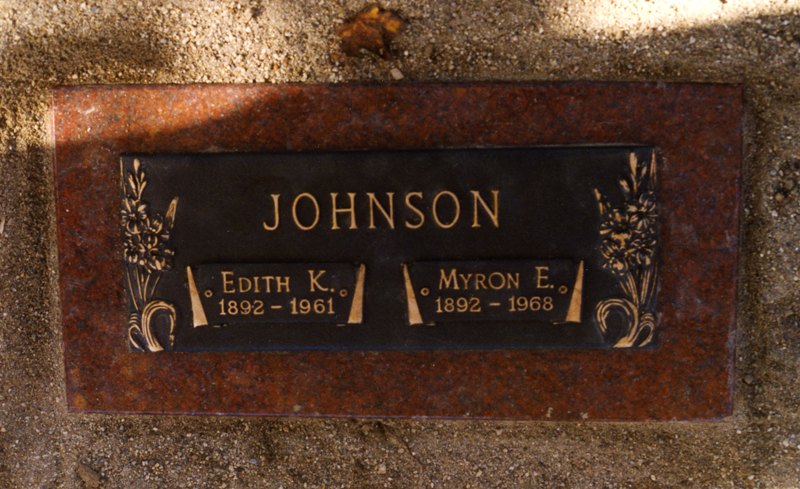His mother died of pneumonia when Myron was nearing five years of age. His father, a farmer and carpenter, felt he had no choice but to break up the large family of children that he could not support or take care of himself, and he placed Myron and his youngest brothers at the Kansas State Orphans' Home in Atchison, Kansas. Myron had many adventures while growing up at the orphanage and in foster homes, culminating in his determination to achieve an education for himself and become an architect. It would take him ten years of working his way through school while he supported himself. Completing high school and college, he graduated in 1919, the first (and only that year) B.S. graduate from the School of Architecture of Kansas State College in Manhattan.
When World War I broke out, Myron was drafted into the U.S. Army at Manhattan, Kansas in September 1917 and served as a Corporal of the 13th squad, Company G, 353rd "All Kansas" Infantry Regiment of the 89th Division under Major General Leonard Wood, at Camp Funston on the Fort Riley military reservation. He was detached to help design, erect, and even build furniture for the Kansas Building at Camp Funston and so missed going overseas with his unit. After the Kansas Building was completed and dedicated he was transferred to the Camp Utilities Division, Architectural Department, where, among other tasks, he organized and ran a contour survey of a four-mile non-functioning drainage ditch. A few weeks later he was sent back to the Manhattan college campus to complete his architectural training and, on special assignment with the Student Army Training Corps, helped design and erect a dozen large barracks on the campus. After the war ended, Myron was an active member and elected officer of the American Legion Saline Post No. 62 of Salina, Kansas in the 1920's, as well as a charter member of the Kansas State Agricultural College alumni association formed there in 1923.
His first professional job after graduation and military service was working (at first as sole draftman) for the architectural firm of Charles W. Shaver in Salina, Kansas (1919-1922). While at this firm he had a hand in the design and supervising construction of Memorial Hall erected at 410 Ash Street in Salina. His second position, working for the architectural firm of Thomas Barber in Colorado Springs, Colorado (1922-1923), included significant work on the monumental First Methodist Church of Pasadena, California (500 East Colorado Boulevard), as well as designing and estimating costs for the Oakland Avenue public school in Colorado Springs. Myron and his family returned to Salina, Kansas in 1923 where Myron opened his own architectural business in the Hoyt-West Building, 153-1/2 North Santa Fe Avenue (1923-1928). There he completed the project he was most proud of, total design, supervised construction, and decoration of the Roy M. Heath home at 8 Crestview Street in Salina, the first of four private residences built in the new Country Club addition. This home was begun in 1925 and finished in 1926 at a cost of $42,000.
On 15 May 1928 Myron Johnson took on the job of architect overseeing the construction of new stores for the J.C. Penney Company. His territory covered the Mid-West and the family relocated to Columbus, Ohio. In 1945 Myron was transferred by the J.C. Penney Company to southern California and continued in charge of new stores in that territory until company policy forced him to retire at age 60 on 1 July 1952.
He was called "John" by his wife and "Pop" by his grandchildren. He married Edith Loree Kelly (a fellow architecture student at Manhattan) on 1 August 1917 in Alma, Wabaunsee Co., Kansas and they had four children, born in Kansas and raised to adulthood in Columbus, Ohio. A few years after retirement from the J.C. Penney Company, Pop and Edith returned from California in 1959 to live in Columbus, Ohio near most of their children and grandchildren.
Myron stayed in touch with his siblings and his interest in maintaining his family ties and researching his family history remained strong. He also inherited his father's ability and love of working with his hands, enjoying woodcrafting and furniture-making. Between 1956 and 1960, at the instigation of his children and for the benefit of his grandchildren, he penned his autobiography.
After seven years as a widower, Myron died of cancer of the throat. He was cremated 26 January 1968 and his ashes were buried the following day beside those of Edith, with a graveside service at 11:00 a.m.
His mother died of pneumonia when Myron was nearing five years of age. His father, a farmer and carpenter, felt he had no choice but to break up the large family of children that he could not support or take care of himself, and he placed Myron and his youngest brothers at the Kansas State Orphans' Home in Atchison, Kansas. Myron had many adventures while growing up at the orphanage and in foster homes, culminating in his determination to achieve an education for himself and become an architect. It would take him ten years of working his way through school while he supported himself. Completing high school and college, he graduated in 1919, the first (and only that year) B.S. graduate from the School of Architecture of Kansas State College in Manhattan.
When World War I broke out, Myron was drafted into the U.S. Army at Manhattan, Kansas in September 1917 and served as a Corporal of the 13th squad, Company G, 353rd "All Kansas" Infantry Regiment of the 89th Division under Major General Leonard Wood, at Camp Funston on the Fort Riley military reservation. He was detached to help design, erect, and even build furniture for the Kansas Building at Camp Funston and so missed going overseas with his unit. After the Kansas Building was completed and dedicated he was transferred to the Camp Utilities Division, Architectural Department, where, among other tasks, he organized and ran a contour survey of a four-mile non-functioning drainage ditch. A few weeks later he was sent back to the Manhattan college campus to complete his architectural training and, on special assignment with the Student Army Training Corps, helped design and erect a dozen large barracks on the campus. After the war ended, Myron was an active member and elected officer of the American Legion Saline Post No. 62 of Salina, Kansas in the 1920's, as well as a charter member of the Kansas State Agricultural College alumni association formed there in 1923.
His first professional job after graduation and military service was working (at first as sole draftman) for the architectural firm of Charles W. Shaver in Salina, Kansas (1919-1922). While at this firm he had a hand in the design and supervising construction of Memorial Hall erected at 410 Ash Street in Salina. His second position, working for the architectural firm of Thomas Barber in Colorado Springs, Colorado (1922-1923), included significant work on the monumental First Methodist Church of Pasadena, California (500 East Colorado Boulevard), as well as designing and estimating costs for the Oakland Avenue public school in Colorado Springs. Myron and his family returned to Salina, Kansas in 1923 where Myron opened his own architectural business in the Hoyt-West Building, 153-1/2 North Santa Fe Avenue (1923-1928). There he completed the project he was most proud of, total design, supervised construction, and decoration of the Roy M. Heath home at 8 Crestview Street in Salina, the first of four private residences built in the new Country Club addition. This home was begun in 1925 and finished in 1926 at a cost of $42,000.
On 15 May 1928 Myron Johnson took on the job of architect overseeing the construction of new stores for the J.C. Penney Company. His territory covered the Mid-West and the family relocated to Columbus, Ohio. In 1945 Myron was transferred by the J.C. Penney Company to southern California and continued in charge of new stores in that territory until company policy forced him to retire at age 60 on 1 July 1952.
He was called "John" by his wife and "Pop" by his grandchildren. He married Edith Loree Kelly (a fellow architecture student at Manhattan) on 1 August 1917 in Alma, Wabaunsee Co., Kansas and they had four children, born in Kansas and raised to adulthood in Columbus, Ohio. A few years after retirement from the J.C. Penney Company, Pop and Edith returned from California in 1959 to live in Columbus, Ohio near most of their children and grandchildren.
Myron stayed in touch with his siblings and his interest in maintaining his family ties and researching his family history remained strong. He also inherited his father's ability and love of working with his hands, enjoying woodcrafting and furniture-making. Between 1956 and 1960, at the instigation of his children and for the benefit of his grandchildren, he penned his autobiography.
After seven years as a widower, Myron died of cancer of the throat. He was cremated 26 January 1968 and his ashes were buried the following day beside those of Edith, with a graveside service at 11:00 a.m.
Inscription
JOHNSON
Edith K.
1892-1961
Myron E.
1892-1968
Family Members
-
![]()
Orra Ethel Johnson
1878–1878
-
![]()
Ezra Oran "Ed" Johnson
1879–1938
-
![]()
Harley Emmet Johnson
1880–1964
-
![]()
Edith Cordelia Johnson
1881–1883
-
![]()
Otis William Johnson
1883–1963
-
![]()
Omer Miller Johnson
1885–1964
-
![]()
Bertha May Johnson Baker
1886–1971
-
![]()
Anna Mabel Johnson Dougan
1888–1940
-
![]()
Willis Benford Johnson
1890–1965
-
![]()
Orla John Johnson
1893–1986
-
![]()
Raymond Melvin "Ray" Johnson
1895–1978
